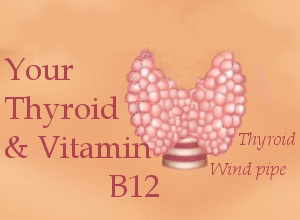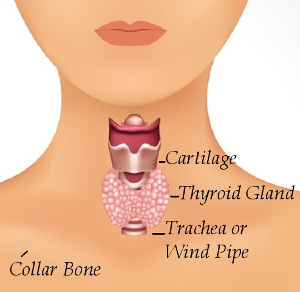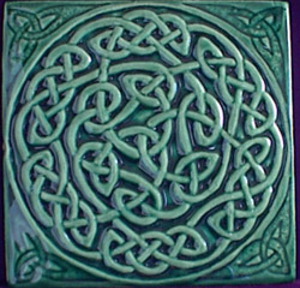
Over the years whenever I’d fill my injectable B12 prescription or mention B12 lozenges, people would say, “Have your thyroid checked.” I ignored them because I was sure the problem was vitamin B12 deficiency, nothing more or less. After all, B12 had made an indisputable change for the better in my life.
Recently, though, I’m having a rethink. “Recently” coincides with having watched Oh My Venus, a South Korean romance on Hulu, about an overweight lawyer, who was once the Venus of her area, and who has hypothyroidism. Recently also coincides with getting active on Pinterest.
I love S. Korean romances for their inevitable episodes featuring health properties of food. And I love Pinterest for its wealth of health related knowledge.

Had I not watched Oh My Venus, I wouldn’t have paid attention to a pin which claimed to be “The Famous Tibetan Exercise for the Thyroid Gland.” Faced with wanting to do a thyroid exercise, I found I had no idea where the thyroid gland is. Google helped with photos and diagrams showing the butterfly shaped gland that’s not so easy to find on a female neck with no Adam’s apple.
Less conspicuous in my Google search was the “famous” Tibetan exercise. Surprisingly, though, two of the first YouTube videos of Thyroid exercises were in a language that suggested India, if not Tibet.
What makes me want to exercise my thyroid is the nerve issues which, by way of pain and impaired balance, restrict walking and other physical exercise. Just to be clear, I’m not looking for an easy way out of physical exercise. Rather, I’m building on my experience of very little walking changing my metabolism. With only 3 minutes of walking a day, I once lost an inch a month for 11 months straight and they didn’t come back, until all too recently.

Celtic knots
Thyroid problems contribute to vitamin B12 deficiency by reducing B12 absorption, and as vitamin B12 levels drop thyroid problems increase… sounds like a Celtic knot.

Beginning or end aside, a study of 116 hypothyroid patients found that nearly half had low vitamin B12 levels. Of those men and women, half were given monthly vitamin B12 injections.
58% of those receiving B12 injections had a reduction in hypothyroid symptoms, to include weakness, impaired memory, depression, numbness and decreased reflexes.
21 people in the study complained of symptoms of vitamin B12 deficiency despite having B12 levels said to be “normal.” When those 21 men and women were given B12 injections, 40% had a “good clinical response” after six months. Jabbar, A, et al.
“Vitamin B-12 Deficiency Common in Primary Hypothyroidism.” 2009.
What is a healthy vitamin B12 level?
The Famous Tibetan Thyroid Exercise
Below is the “famous” Tibetan exercise I saw on Pinterest and tried.
Number 4 together with number 6 seemed to make my thyroid uncomfortable, which was a bit worrying. My thyroid was still feeling as if it were bruised over an hour later. So I’m not doing that part again, at least not “as hard as you can”.
1. Rub hands well to heat. Then carefully place your hands on the thyroid gland and hold them there for at least ten seconds.
2. You need to swallow three times. If you feel dry mouth, drink three small sips of water.
3. Slowly exhale.
4. As you breathe out, bend your head forward and push the chin toward the chest as hard as you can. Keep the chin so few seconds without breathing. When you start to breathe, lift the chin. And move her head firmly back.
5. Hold the head in this position for a while. Once you begin to exhale, push the chin toward the chest again.
6. When your chin is on your chest, slowly turn your head left and right, without moving the chin to chest distance. In this way makes excellent massage thyroid.
7. Repeat steps 1 to 6. Move your head slowly, not rush, but relax. Do not think about anything.
8. Repeat the massage the first step.
I thought about correcting the English in the Thyroid Exercise, but decided to leave it as I found it.
Here’s a video which is clear and shows a thyroid exercise that includes making a sound. I can feel the vibrations on my thyroid when I do it:
In any case, worrying about my thyroid because I did the “famous” exercise with perhaps too much force has led to an awareness of an uncomfortable feeling I’ve had for years but mostly ignored.
The “blacking out” feeling
Since I didn’t know my thyroid was in my neck, I never thought about what it could mean that wearing a necklace that sits against the bottom of my neck makes me feel as if it’s hard to breathe and I could black out. It’s such an uncomfortable feeling that I can’t wear that sort of necklace. Turtle neck tees and sweaters don’t cause the feeling.
Now, I see many people with hypothyroidism complain of blacking out and fainting, or feeling as if they are about to black out or faint. What strikes me is that I constantly had that feeling when I got up quickly. I believed the feeling was related to being six feet tall. When B12 injections ended the blacking out feeling when I stood up, I took it to mean the feeling had been a result of B12 deficiency.
Now, knowing B12 deficiency and thyroid problems go hand in hand, I’m looking into things that will be good for my thyroid gland. I’m curious to see if the uncomfortable feeling from necklaces that sit low on my neck goes away with thyroid gland exercises and a diet to increase thyroid health.
Your thyroid loves iodine rich foods
First among the foods your thyroid loves are foods rich in iodine. Your thyroid needs iodine to make the hormones used to regulate digestive enzyme activity, the synthesizing of amino acids from proteins, and skeletal and central nervous system development.
Men and women need to eat about 150 mcg of iodine a day. Pregnant women need more, at about 220 mcg a day. Mothers who are breastfeeding need still more at 290 mcg a day.

Other foods containing Iodine
Baked Potato ~ 60 mcg. Be sure to eat the skin, that’s where most of the nutrients are. A medium size baked potato provides about 40% of the iodine your thyroid needs per day.
Cup of Milk ~ 56 mcg which is about 37% of the iodine you/your thyroid needs in a day.
Cod ~ 99 mcg. Boy, do I miss Fish & Chips in London! Just 3 ounces of cod provided 66% of the iodine your thyroid needs in a day.
Lima Beans ~ 16 mcg in one cup, cooked.
Navy Beans ~ 32 mcg in 1/2 cup, cooked.
Organic Corn ~ 14 mcg in 1/2 cup cooked.
Asparagus ~ 1 mcg in four boiled spears.
Celery ~ 1 mcg in a half cup of diced celery.
Dried Seaweed ~ 4,500 mcg. A whooping 3,000% of the iodine we need in a day is in 1/4 ounce. Which is why eating sushi just one or two times a week is extremely healthy for your thyroid. Because I’m not a fan of fishy tasting things, munching dried seaweed, like dulse, sea lettuce, doesn’t work for me. The dried seaweed flakes, substituting for sodium salt, has good reviews, so I’m trying it. Just a sprinkling is all you need. I’m pretty sure my daily iodine intake is too low for my thyroid to be healthy, so this will be good..
Spirulina ~ 15 mcg per serving. I’ve been buying Nutrex Spirulina, from Hawaii. Nutrex doesn’t have iodine on the Supplement Facts label, so I called. They were helpful and said the nutrient results for their Spirulina are several pages long, so they only include ones that are “industry standard” on their label. I like Nutrex Astaxanthin, which is why I bought their Spirulina. I’m delighted the Spirulina has B12 in it and 2 grams of protein per serving.
Seaweed and Fukushima ~ Should you be worried?
When I mentioned using kelp as a seasoning in order to achieve a good amount of iodine in my daily diet, some people on Twitter warned me to think about Fukushima and the possible radiation level in seaweed, whether it’s is from Japan, from waters near California, or the waters on the coast of Maine.
I hadn’t thought about that, so I watched videos of people with Geiger counters and packs of seaweed. I also read quite a lot about radiation.
The most authentic, and convincing account I read was written by Dr. S. Akizuko of St. Francis Hospital in Nagasaki, who survived the atomic bomb in World War II. Dr. Akizuko writes:
“On August 9, 1945, the atomic bomb was dropped on Nagasaki. Lethal atomic radiation spread over the razed city. For many it was an agonizing death. For a few it was a miracle. Not one co-worker in the hospital suffered or died from radiation. The hospital was located only one mile from the center of the blast. My assistant and I helped many victims who suffered the effects of the bomb. In the hospital there was a large stock of miso and tamari. We also kept plenty of brown rice and wakame (seaweed used for soup-stock or in miso soup). I had fed my co-workers brown rice and miso soup for some time before the bombing. None of them suffered from atomic radiation. I believe this is because they had been eating miso soup.” From Surviving Harmful Radiation by Julie Ferre. (Dr. Akizuki wrote about this further in How We Survived Nagasaki ~ London: Quartet Books, 1981.
And then, there’s this: studies have proven that the isoflavone genistein found in soy miso is associated with a decrease risk of cancer.
In 1980, the Japanese National Cancer Center did an epidemiological study showing that those who ate miso soup daily were not only less likely to suffer from cancer, but also stomach issues and heart disease. Since then, countless studies have revealed similar research, linking anti-cancer benefits directly to intake of miso soup.
“Over a 25-year period, the Japanese Cancer Institute tested and tracked 260,000 subjects, dividing them into three groups. Group one ate miso soup daily, group two consumed miso two or three times a week, while group three ate no miso at all. The results were stark: those who had not eaten any miso showed a 50% higher incidence of cancer than those who had eaten miso.”
Miso is a traditional paste made by fermenting soybeans with salt and koji, a mold, Latin name, Aspergillus oryzae.
About iodized salt
Iodized Salt ~ 77 mcg Just one gram of iodized salt, which is less than a quarter teaspoon, provides 51% of the thyroid’s daily need for iodine. Or, does it? Dr. David Brownstein, Author of Iodine: Why You Need It, Why You Can’t Live Without It, writes, “In all my years of practicing medicine, I have yet to see one item provide such miraculous effects on the body as iodine does.
Dr. Brownstein continues,
The iodization of salt was hailed as the first public health miracle. However, iodized salt is inadequate to supply the body’s need for iodine, particularly in our toxic environment. Even though refined salt can prevent goiter in the vast majority of people, the miniscule amount of iodine found in it falls far short of the amount necessary for promoting optimal thyroid function. Furthermore, refined salt fails to provide enough iodine for the rest of the body’s needs.
Iodine is added to table salt at 100 parts per million as potassium iodide, which amounts to 77 μg (micrograms) of iodide per gram of salt. The RDA for iodine is set at 150 μg per day for adults in the U.S. and slightly more during pregnancy and lactation. Remember, the RDA was set to prevent goiter in the vast majority of people. The average American takes in 4 grams to 10 grams of refined salt per day. That’s more than the recommended daily allowance. So, why don’t we get enough iodine from salt?
Research, however, shows that just ten percent of iodine in salt is bioavailable–that is, completely absorbed by your body. (1) That means that that iodized salt provides somewhere between 30 to 77 μg a day — markedly below the recommended amount. Additionally, approximately 70 percent of the salt used by commercial industry in the U.S. is not iodized salt.
Green Tea Warning
While green tea is great for quercetin which lowers the risk of skin cancer, a study published in 2011 in “Cancer Causes & Control” studied the link between thyroid cancer and coffee or green tea consumption in over 100,000 Japanese men and women between 40 and 69 years old. After following the subjects for over 10 years, the researchers found that premenopausal women who consumed 5 or more cups of green tea a day were more likely to develop thyroid cancer.
Effect of Hypothyroidism on B-12 Absorption
Hypothyroidism can compromise your ability to absorb vitamin B12. An infection of Helicobacter pylori bacteria may also interfere with gastric secretions and hinder B12 absorption.[9]
Experts believe that 4.6% of the U.S. population age 12 and up suffers from hypothyroidism.[6] One study found that approximately 40% of hyperthyroid patients also suffer from B12 deficiency. Adding a B12 supplement to these patients’ routines improved weakness, memory, mood, and other symptoms.[10] The USDA recommends B12 supplementation for people at risk of deficiency because it’s more easily absorbed than B12 from food sources.[11]



